Few inventions have changed how people live and experience the world as much as the invention of the airplane. During both World Wars, government subsidies and demands for new airplanes vastly improved techniques for their design and construction. Following the World War II, the first commercial airplane routes were set up in Europe. Over time, air travel has become so commonplace that it would be hard to imagine life without it. The airline industry, therefore, certainly has progressed. It has also altered the way in which people live and conduct business by shortening travel time and altering our concept of distance, making it possible for us to visit and conduct business in places once considered remote. (For more on the airline industry, read Is That Airline Ready For Lift-Off?)
The airline industry exists in an intensely competitive market. In recent years, there has been an industry-wide shakedown, which will have far-reaching effects on the industry's trend towards expanding domestic and international services. In the past, the airline industry was at least partly government owned. This is still true in many countries, but in the U.S. all major airlines have come to be privately held.
The airline industry can be separated into four categories by the U.S. Department of Transportation (DOT):
- International - 130+ seat planes that have the ability to take passengers just about anywhere in the world. Companies in this category typically have annual revenue of $1 billion or more.
- National - Usually these airlines seat 100-150 people and have revenues between $100 million and $1 billion.
- Regional - Companies with revenues less than $100 million that focus on short-haul flights.
- Cargo - These are airlines generally transport goods.
Airport capacity, route structures, technology and costs to lease or buy the physical aircraft are significant in the airline industry. Other large issues are:
- Weather - Weather is variable and unpredictable. Extreme heat, cold, fog and snow can shut down airports and cancel flights, which costs an airline money.
- Fuel Cost - According to the Air Transportation Association (ATA), fuel is an airline's second largest expense. Fuel makes up a significant portion of an airline's total costs, although efficiency among different carriers can vary widely. Short haul airlines typically get lower fuel efficiency because take-offs and landings consume high amounts of jet fuel.
- Labor - According to the ATA, labor is the airline's No.1 cost; airlines must pay pilots, flight attendants, baggage handlers, dispatchers, customer service and others.
Key Ratios/Terms
Available Seat Mile = (total # of seats available for transporting passengers) X (# of miles flown during period)
Revenue Passenger Mile = (# of revenue-paying passengers) X (# of mile flown during the period)
Revenue Per Available Seat Mile = (Revenue)
(# of seats available)
Air Traffic Liability (ATL): An estimate of the amount of money already received for passenger ticket sales and cargo transportation that is yet to be provided. It is important to find out this figure so you can remove it from quoted revenue figures (unless they specifically state that ATL was excluded).
Load Factor: This indicator, compiled monthly by the Air Transport Association (ATA), measures the percentage of available seating capacity that is filled with passengers. Analysts state that once the airline load factor exceeds its break-even point, then more and more revenue will trickle down to the bottom line. Keep in mind that during holidays and summer vacations load factor can be significantly higher, therefore, it is important to compare the figures against the same period from the previous year.
Analyst Insight
Airlines also earn revenue from transporting cargo, selling frequent flier miles to other companies and up-selling in flight services. But the largest proportion of revenue is derived from regular and business passengers. For this reason, it is important that you take consumer and business confidence into account on top of the regular factors that one should consider like earnings growth and debt load. (For more about the consumer confidence survey, see Economic Indicators: Consumer Confidence Index.)
Business travelers are important to airlines because they are more likely to travel several times throughout the year and they tend to purchase the upgraded services that have higher margins for the airline. On the other hand, leisure travelers are less likely to purchase these premium services and are typically very price sensitive. In times of economic uncertainty or sharp decline in consumer confidence, you can expect the number of leisure travelers to decline.
It is also important to look at the geographic areas that an airline targets. Obviously, more market share is better for a particular market, but it is also important to stay diversified. Try to find out the destination to which the majority of an airline's flights are traveling. For example, an airline that sends a high number of flights to the Caribbean might see a dramatic drop in profits if the outlook for leisure travelers looks poor.
A final key area to keep a close eye on is costs. The airline industry is extremely sensitive to costs such as fuel, labor and borrowing costs. If you notice a trend of rising fuel costs, you should factor that into your analysis of a company. Fuel prices tend to fluctuate on a monthly basis, so paying close attention to these costs is crucial.
- Threat of New Entrants. At first glance, you might think that the airline industry is pretty tough to break into, but don't be fooled. You'll need to look at whether there are substantial costs to access bank loans and credit. If borrowing is cheap, then the likelihood of more airliners entering the industry is higher. The more new airlines that enter the market, the more saturated it becomes for everyone. Brand name recognition and frequent fliers point also play a role in the airline industry. An airline with a strong brand name and incentives can often lure a customer even if its prices are higher.
- Power of Suppliers. The airline supply business is mainly dominated by Boeing and Airbus. For this reason, there isn't a lot of cutthroat competition among suppliers. Also, the likelihood of a supplier integrating vertically isn't very likely. In other words, you probably won't see suppliers starting to offer flight service on top of building airlines.
- Power of Buyers. The bargaining power of buyers in the airline industry is quite low. Obviously, there are high costs involved with switching airplanes, but also take a look at the ability to compete on service. Is the seat in one airline more comfortable than another? Probably not unless you are analyzing a luxury liner like the Concord Jet.
- Availability of Substitutes. What is the likelihood that someone will drive or take a train to his or her destination? For regional airlines, the threat might be a little higher than international carriers. When determining this you should consider time, money, personal preference and convenience in the air travel industry.
- Competitive Rivalry. Highly competitive industries generally earn low returns because the cost of competition is high. This can spell disaster when times get tough in the economy.
Key Links
- Federal Aviation Administration - Get the latest regulation news, airport delays, etc.
- AviationNow.com - Information and news on the airline/aerospace industry.
- AirWise.com - Airport and aviation news
The Industry Handbook: The Oil Services Industry
-
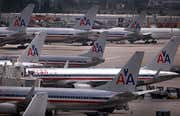 Investing
InvestingWho Are American Airlines’ Main Competitors? (DE, JBLU)
Understand what makes American Airlines a good company and what sets it apart in the industry. Learn about the top four competitors to American Airlines. -
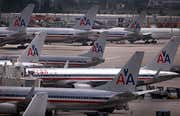 Investing
InvestingAmerican Airlines Trades Ex-Dividend Wednesday (AAL)
The company is adjusting to an environment where there are more seats available across the industry than demand, which forces airliners to cut prices. -
 Investing
InvestingAmerican Airlines & US Airways Merger: It Matters!
While the two airlines' merger creates a new giant in the industry and reduces choice for consumers and employees, investors should benefit. -
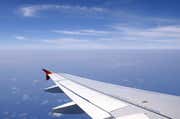 Personal Finance
Personal FinanceHow are Discount Airlines so Cheap?
Ever wonder what the fees are behind airfare prices? It's more complex than you think. -
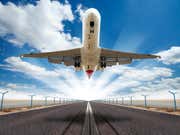 Investing
InvestingFrequent Flyer Miles, the Hidden Lynchpin of Airline Sector
Analysts at Stifel argue that frequent flier programs are secretly generating big, reliable profits across airlines. -
 Insights
InsightsAirline Stocks Rally (DAL, AAL)
Airline stocks are up today thanks to reports that the industry is doing "OK." -
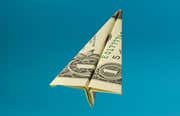 Personal Finance
Personal FinanceEver-Higher Airline Fees: Will Congress Save Us?
Democratic senators want to crack down on high fees the airlines charge for things like changing flights. The airlines say this would end cheap airfares. -
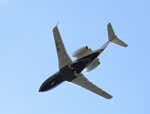 Personal Finance
Personal FinanceTop New Trends In Airline Travel
Learn more about the newest policies and procedures of America's airlines, and find out how these changes are affecting profit margins. -
 Insights
InsightsAmerican Airlines Updates Q4 Guidance, Announces November Traffic (AAL)
American Airlines issued a press release detailing its November 2016 traffic performance. The airline also revised its Q4 guidance.



